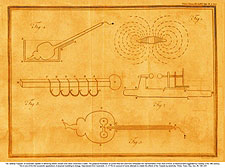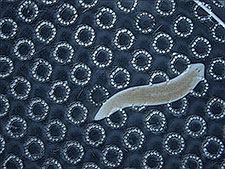Temporal Information
Cognitive/Behavioral Science Projects in the Levin Lab
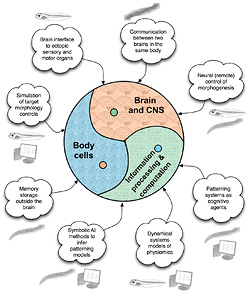
- Body cells
- Behavioral memory storage outside the brain
- Sensing & remembering target morphology
- Modeling of gene regulatory network behavioral competencies
- Learning and memory in cells and tissues ex vivo
- Brain and CNS
- Plasticity of interface to ectopic sensory and motor organs
- Communication between two brains in the same body
- Neural (long-range) control of morphogenesis
- Information processing & computation
- Information processing models of physiological signaling networks
- Modeling morphogenesis as behavior of collective intelligence of cell swarms
- Symbolic Al methods to infer patterning mechanisms
The Properties of Memory Storage and Transmission in Tissue
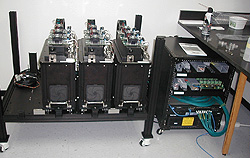
Flatworms can learn in a variety of behavioral paradigms and are a unique model system in which regeneration and memory can be studied in the same animal. In partnership with Boston Engineering, we have designed and built a computer-controlled automated learning and testing chamber that allows the training of a set of worms in a consistent environment (removing sources of error such as observer limitations, and greatly increasing the efficiency of the learning process). By combining a robust learning/memory response with experiments feasible only in this highly-regenerative model system, we are investigating the molecular basis of memory. Using quantitative, automated behavior analysis techniques we are asking how and where information is encoded and how it can be imprinted upon the regenerating brain by other tissues.

Our parallelized machine vision and environmental control platform is a unique next-generation system allowing not only quantitative characterization of animal behavior (worm, tadpole, and zebrafish) but real-time reward/punishment feedback to each individual subject independently, allowing powerful learning and instrumental/classical conditioning assays. A scaled-up version of this technology will allow high-throughput screening of small molecule libraries for complex neuroactive effects (such as nootropic compounds that increase learning rate, modulate addiction, etc.). In vertebrate systems such as tadpoles, we are investigating the cognitive consequences of laterality inversion and brain plasticity in the context of altered CNS topology or addition of ectopic sensory/motor organs.
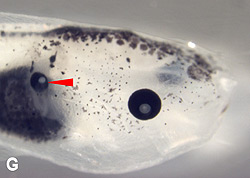
The ability to manipulate large-scale anatomy using our unique bioelectric reagents offers an excellent opportunity to study the plasticity and dynamic properties of the brain-body interface. In organisms with ectopic sense organs or limbs, how does the brain recognize the presence of these extraneous (and evolutionarily unexpected) structures, and how does it incorporate their data and abilities into functional behavioral programs? We are currently pursuing this question using behavioral and neurophysiological analysis of tadpoles with extra eyes in the flank and other regions. Understanding the means by which the CNS recognizes tissues in aberrant locations will enrich fields such as sensory augmentation, regenerative repair of injury, brain plasticity, morphogenetic surveillance during pattern formation, and synthetic biology/bioengineering.


